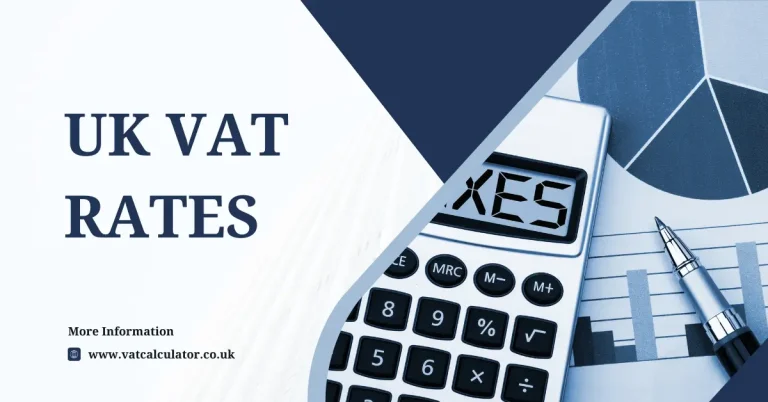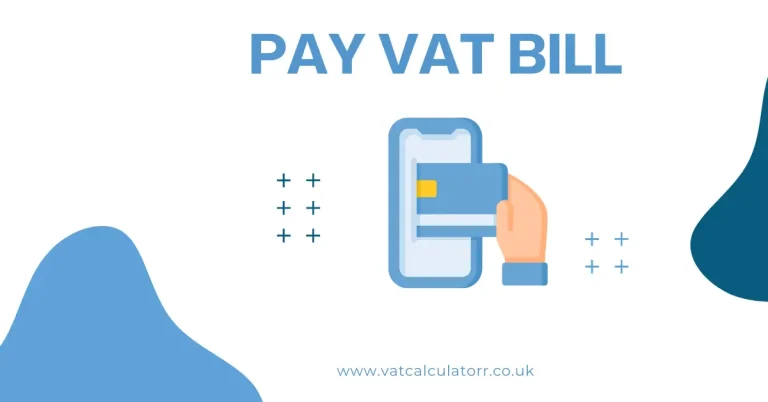Can You Charge VAT Before Being VAT Registered?
No, you cannot charge VAT before being VAT registered. UK law prohibits charging VAT without a valid registration number. Businesses that charge VAT before registration face penalties up to 100% of the VAT amount shown on invoices.
This guide explains VAT registration requirements, penalties for early charging, and corrective steps. You will learn when registration becomes mandatory and how to avoid expensive mistakes.
Can You Legally Charge VAT Without Registration?
No, charging VAT without registration violates UK tax law. Only businesses with valid VAT registration numbers can issue invoices showing VAT charges. The Finance Act 2008 Schedule 41 paragraph 2 specifically prohibits this practice.
HMRC treats unauthorized VAT charging as a serious offense. Businesses must obtain official registration before adding VAT to any invoice or receipt.
Legal requirements for VAT charging:
- Valid VAT registration number issued by HMRC
- Effective registration date must have passed
Your VAT number appears as a 9-digit code starting with GB. This number must appear on all VAT invoices. Without this number, VAT charges are illegal.
The registration process involves submitting detailed business information to HMRC. Processing typically takes 2-4 weeks. During this waiting period, charging VAT remains prohibited.
What qualifies as unauthorized VAT charging:
- Adding VAT percentages to invoices without registration
- Collecting VAT amounts from customers before registration approval
- Showing VAT calculations on any business documentation
What Is the Current VAT Registration Threshold?
The VAT registration threshold stands at £90,000 annual taxable turnover in 2025. This figure increased from £85,000 in April 2024, representing the highest VAT threshold among OECD countries alongside Switzerland.
Mandatory registration triggers:
- Taxable turnover exceeds £90,000 in any rolling 12-month period
- Expected turnover will exceed £90,000 within 30 days
The rolling 12-month calculation means any consecutive 12 months, not just calendar years. January-December, February-January, or any other 12-month span counts equally.
Taxable turnover components:
- Standard rate supplies at 20%
- Reduced rate supplies at 5%
- Zero-rated supplies at 0%
Zero-rated items like books and children’s clothing still count toward the threshold despite carrying 0% VAT. VAT-exempt supplies like insurance do not count toward registration requirements.
Forward look test: Register within 30 days if you expect to exceed £90,000 in the next month alone.
Backward look test: Register within 30 days of the month-end when your rolling 12-month turnover exceeded £90,000.
Voluntary registration remains possible below the threshold. Many businesses choose early registration to reclaim VAT on purchases and appear more established.
What Are the Penalties for Charging VAT Early?
Penalties for unauthorized VAT charging reach up to 100% of the VAT amount shown. HMRC applies a minimum 10% penalty even for genuine mistakes reported voluntarily. These penalties apply regardless of intent or good faith.
HMRC penalty structure:
- Maximum penalty: 100% of VAT incorrectly charged
- Minimum penalty: 10% of VAT amount for careless errors
The penalty calculation uses the total VAT shown across all incorrect invoices. A business charging £5,000 in unauthorized VAT faces penalties between £500-£5,000.
Additional financial consequences:
- Interest charges on unpaid VAT amounts
- Requirement to pay collected VAT to HMRC
- Potential civil evasion penalties for serious cases
Example penalty calculation: Company ABC charges £2,000 VAT across 10 invoices before registration. HMRC could impose:
- Minimum penalty: £200 (10%)
- Maximum penalty: £2,000 (100%)
- Plus £2,000 VAT payment to HMRC
Total cost ranges from £2,200 to £4,000 for this error.
Factors affecting penalty severity:
- Whether disclosure was prompted or voluntary
- Evidence of deliberate versus careless conduct
- Cooperation level with HMRC investigation
HMRC considers voluntary disclosure as mitigation but still applies the 10% minimum penalty. Concealing errors increases penalties toward the 100% maximum.
What Should You Do If You Charged VAT Too Early?
Stop charging VAT immediately and contact HMRC with voluntary disclosure. Quick action demonstrates good faith and may limit penalties to the 10% minimum. Attempting to hide errors increases penalty severity significantly.
Immediate corrective steps:
- Cease all VAT charging on new invoices
- Contact HMRC VAT helpline for voluntary disclosure
Customer correction process:
- Issue credit notes for all incorrectly charged VAT
- Refund VAT amounts collected from customers
- Provide written explanation of the error
Documentation requirements:
- List all invoices showing incorrect VAT
- Calculate total VAT amounts involved
- Prepare timeline showing when errors occurred
Contact HMRC on 0300 200 3700 to report the error. Explain the mistake clearly and outline corrective actions taken. HMRC may request written confirmation of your disclosure.
Alternative correction method: Some businesses choose to absorb VAT costs rather than requesting customer refunds. This means paying HMRC the collected VAT amount without recovering it from customers.
Customer relationships often improve when businesses handle errors transparently. Most customers appreciate honest communication about mistakes.
When Can You Start Charging VAT?
VAT charging becomes legal only after receiving your registration number and reaching your effective date of registration (EDR). The EDR determines when VAT obligations begin, not when you submitted your application.
EDR determination rules:
- Applied before crossing threshold: EDR equals expected threshold date
- Applied after crossing threshold: EDR equals first day of following month
Example EDR calculations: Business A applies on March 15th expecting to exceed threshold on April 10th. EDR becomes April 10th.
Business B exceeds threshold on June 20th and applies on July 5th. EDR becomes July 1st.
Your VAT registration certificate shows both your VAT number and EDR clearly. Never charge VAT before this date, even with your number in hand.
Pre-registration preparation:
- Update accounting software with VAT calculations
- Prepare customer communications about price changes
- Review supplier contracts for VAT implications
Invoice requirements post-registration:
- Show VAT registration number clearly
- Display VAT amounts separately from net prices
- Include appropriate VAT rate percentages
Many businesses send pro forma invoices during registration processing. These documents project future VAT charges but cannot collect payment until registration completes.
How Does VAT Registration Change Your Business Operations?
VAT registration fundamentally alters pricing, accounting, and compliance requirements. You must decide whether to absorb VAT costs or pass them to customers. This decision affects competitiveness and profit margins permanently.
Pricing strategy options:
- Absorb VAT: Maintain current prices, reduce margins by up to 20%
- Pass VAT: Increase prices by 20%, risk customer loss
Customer impact analysis:
- VAT-registered business customers can reclaim VAT charges
- Non-registered business customers pay full VAT amounts
- Consumer customers cannot reclaim VAT
Most business-to-business suppliers pass VAT charges forward. Business-to-consumer suppliers often absorb some VAT to remain competitive.
New administrative obligations:
- Submit quarterly VAT returns by filing deadlines
- Maintain detailed VAT accounting records
- Use Making Tax Digital compatible software
VAT return deadlines:
- Quarter ending March 31st: File by May 7th
- Quarter ending June 30th: File by August 7th
- Quarter ending September 30th: File by November 7th
- Quarter ending December 31st: File by February 7th
Late filing triggers penalty points under the system introduced in 2023. Accumulating penalty points leads to financial penalties.
Record keeping requirements:
- All sales invoices issued
- All purchase invoices received
- VAT account showing calculations
- Supporting documentation for 6 years
Should You Consider Voluntary VAT Registration?
Voluntary registration benefits businesses primarily serving VAT-registered customers. You can reclaim VAT on purchases and project greater business scale. However, administrative burdens increase substantially.
Registration benefits:
- Reclaim VAT on business purchases and expenses
- Backdated claims on goods purchased within 4 years
- Backdated claims on services purchased within 6 months
Example reclaim calculation: Business purchases £10,000 equipment (£8,333 + £1,667 VAT) before registration. After registration, they reclaim the £1,667 VAT from HMRC.
Registration drawbacks:
- Quarterly compliance obligations
- Increased accounting complexity
- Higher effective prices for consumer customers
When voluntary registration makes sense:
- Most customers are VAT-registered businesses
- Significant VAT-bearing purchase expenses exist
- Business growth toward threshold seems likely
Voluntary registration process: Apply through HMRC online services with the same information required for mandatory registration. Processing times remain 2-4 weeks typically.
What Are Common VAT Registration Timing Mistakes?
The most frequent error involves charging VAT during application processing. Many businesses assume application submission permits immediate VAT charging. This assumption triggers significant penalties.
Other timing mistakes:
- Misunderstanding effective date calculations
- Ignoring zero-rated sales in threshold monitoring
- Failing to track rolling 12-month turnover accurately
Threshold monitoring errors: Some businesses only check annual calendar-year turnover. The threshold applies to any consecutive 12-month period, requiring monthly monitoring.
Zero-rated supply confusion: Books, children’s clothes, and food carry 0% VAT but still count toward registration thresholds. Many businesses incorrectly exclude these sales from calculations.
Professional service recommendations:
- Use accounting software with automatic threshold alerts
- Implement monthly turnover review processes
- Consider VAT registration guidance for complex situations
Threshold approach strategies:
- Monitor turnover monthly using VAT calculators
- Plan registration timing to optimize effective dates
- Consider voluntary registration before mandatory requirements
How Do You Track VAT Compliance Requirements?
Monthly turnover monitoring prevents surprise threshold breaches. Professional accounting software provides automatic alerts when approaching the £90,000 limit. This monitoring prevents late registration penalties.
Effective monitoring methods:
- Automated accounting software alerts
- Monthly turnover spreadsheet tracking
- Quarterly compliance reviews with accountants
Software features to seek:
- Rolling 12-month turnover calculations
- Automatic VAT threshold alerts
- Integration with VAT return preparation
Manual tracking alternatives: Create monthly spreadsheets showing:
- Current month sales
- Rolling 12-month totals
- Distance from £90,000 threshold
- Projected threshold crossing dates
Professional monitoring services: Many accountants provide threshold monitoring as part of bookkeeping services. This external oversight reduces compliance risks significantly.
Early warning systems: Set internal alerts at £80,000 turnover (89% of threshold). This provides time for registration planning without rush decisions.
Consider professional advice when approaching thresholds. Understanding registration timing prevents costly mistakes.
What Administrative Changes Follow VAT Registration?
VAT registration creates permanent quarterly filing and payment obligations. You must submit returns within one month and seven days after each quarter ends. Late submissions now trigger penalty points under reformed rules.
New compliance requirements:
- Quarterly VAT return submission
- Digital record keeping using MTD software
- Separate VAT accounting alongside business accounts
Making Tax Digital obligations: All VAT-registered businesses must use compatible software for record keeping and return submission. Manual processes are no longer acceptable.
Penalty point system (introduced 2023):
- Late filing earns penalty points
- Accumulating points triggers financial penalties
- Points expire after 24 months of compliance
Payment obligations:
- VAT due must be paid by return filing deadline
- Electronic payment methods are required
- Late payments incur interest from day one
Useful compliance resources:
Record retention requirements:
- Keep all VAT records for 6 years minimum
- Store digital copies in accessible formats
- Maintain audit trails for all transactions
Professional bookkeeping services often handle VAT compliance entirely. This outsourcing reduces internal administrative burdens while maintaining compliance standards.
Final Thoughts
You cannot legally charge VAT before obtaining official registration – violations carry severe financial penalties. HMRC imposes fines up to 100% of unauthorized VAT charges plus requires full VAT payment regardless.
Monitor your business turnover monthly using professional tools. Register promptly when approaching the £90,000 threshold to avoid late registration penalties. Consider voluntary registration if your customers are primarily VAT-registered businesses.
Businesses that charged VAT prematurely must contact HMRC immediately and issue customer refunds. Voluntary disclosure limits penalties to 10% minimum while concealment increases penalties toward 100% maximum.
Professional accounting advice prevents expensive VAT mistakes. The cost of proper guidance remains far below potential penalties for incorrect VAT charging practices.





